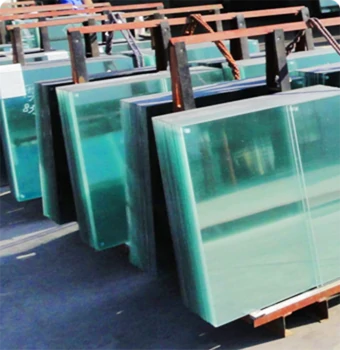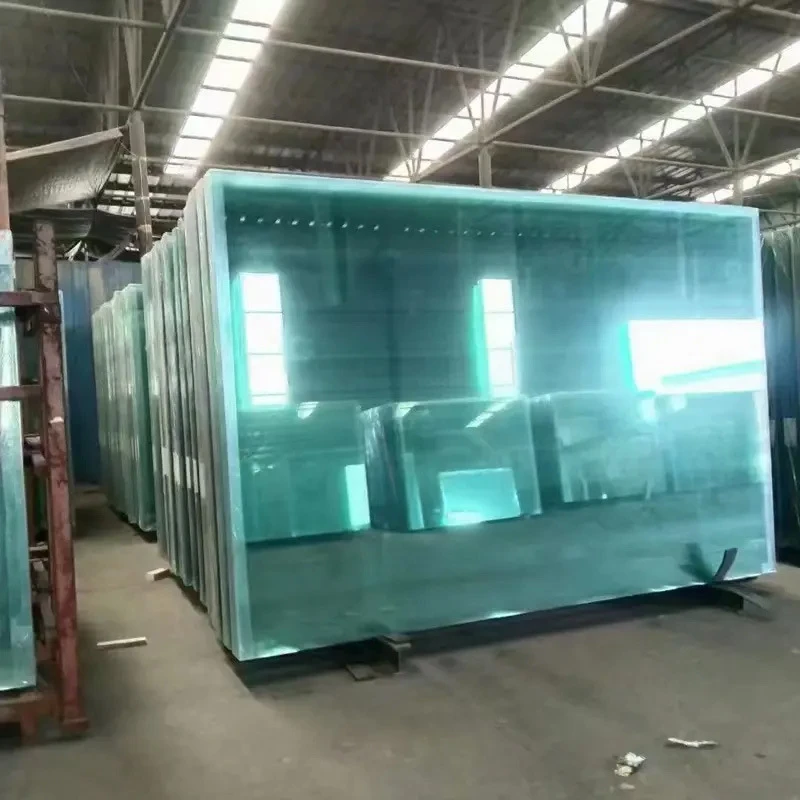Clear glass is often perceived as a singular material; however, it comes in various types, each serving different functional and aesthetic purposes. Understanding these types can enhance one's experience when selecting glass for projects, ensuring that the chosen material aligns with both design expectations and practical needs. As we delve into the diversity of clear glass types, we aim to provide insights derived from both industry expertise and authoritative sources, ensuring that the information is trustworthy and applicable.

The most commonly recognized type is annealed clear glass, a staple in windows, doors, and picture frames. Annealed glass is created by slowly cooling molten glass to relieve internal stresses. This process makes it easier to cut and more affordable, but it lacks the safety features of other glass types, as it can break into large, sharp shards.
When safety is a priority, tempered glass offers a superior alternative. Created by heating annealed glass to over 600 degrees Celsius and then rapidly cooling it, tempered glass is significantly stronger and breaks into small, pebble-like pieces that minimize injury risk. Because of its safety rating, tempered glass is typically used in vehicle windows, shower doors, and public buildings. This reinforcing process demands precise manufacturing, reflecting a deep expertise in glass treatment techniques.

Laminated glass, another safety-centric variant, combines clear interlayers between two or more glass sheets. The interlayer, usually made of polyvinyl butyral (PVB), holds the glass together upon impact, preventing shattering. Its soundproofing and UV protection attributes make laminated glass an ideal choice for automotive windshields and structural applications where security and acoustic performance are critical. The authoritative development of this glass underscores decades of research and innovation in glass technology.
types of clear glass
Optical clarity is paramount in certain uses, such as lenses and sophisticated architectural projects. Low-iron glass, recognized for its superior transparency and reduced green tint, caters to these applications. The iron content reduction in the glass formula showcases the expertise needed in chemical adjustments, yielding a product highly valued for its aesthetics and light transmittance.
For artistic endeavors or specialized architectural accents, etched glass offers versatility through its textured surface, achieved via acid-etching or sandblasting. This process not only enhances privacy without sacrificing natural light but also serves as a medium for artistic expressions in modern design projects. The craftsmanship involved in producing etched glass pieces reflects the mastery required in creating both functional and aesthetically pleasing elements.
Though often overlooked, the consideration of glass thickness and coatings can also significantly influence performance. Glass thickness affects its strength and insulation properties, while coated glass, such as low-emissivity (Low-E) glass, employs thin metallic layers to improve energy efficiency by reflecting infrared energy. These advancements in coating technologies exhibit authoritative knowledge in material science, offering homeowners and builders enhanced options for sustainable and cost-effective solutions.
In selecting the right type of clear glass, recognizing the nuances and advantages of each variant is crucial. Market trends and consumer reviews further illuminate the practical applications and benefits, ensuring that the chosen glass not only fulfills the intended purpose but also upholds quality and reliability. This blend of experience, expertise, and trust in the information provided empowers consumers to make informed decisions, transforming projects with optimal glass solutions.
 Afrikaans
Afrikaans  Albanian
Albanian  Amharic
Amharic  Arabic
Arabic  Armenian
Armenian  Azerbaijani
Azerbaijani  Basque
Basque  Belarusian
Belarusian  Bengali
Bengali  Bosnian
Bosnian  Bulgarian
Bulgarian  Catalan
Catalan  Cebuano
Cebuano  Corsican
Corsican  Croatian
Croatian  Czech
Czech  Danish
Danish  Dutch
Dutch  English
English  Esperanto
Esperanto  Estonian
Estonian  Finnish
Finnish  French
French  Frisian
Frisian  Galician
Galician  Georgian
Georgian  German
German  Greek
Greek  Gujarati
Gujarati  Haitian Creole
Haitian Creole  hausa
hausa  hawaiian
hawaiian  Hebrew
Hebrew  Hindi
Hindi  Miao
Miao  Hungarian
Hungarian  Icelandic
Icelandic  igbo
igbo  Indonesian
Indonesian  irish
irish  Italian
Italian  Japanese
Japanese  Javanese
Javanese  Kannada
Kannada  kazakh
kazakh  Khmer
Khmer  Rwandese
Rwandese  Korean
Korean  Kurdish
Kurdish  Kyrgyz
Kyrgyz  Lao
Lao  Latin
Latin  Latvian
Latvian  Lithuanian
Lithuanian  Luxembourgish
Luxembourgish  Macedonian
Macedonian  Malgashi
Malgashi  Malay
Malay  Malayalam
Malayalam  Maltese
Maltese  Maori
Maori  Marathi
Marathi  Mongolian
Mongolian  Myanmar
Myanmar  Nepali
Nepali  Norwegian
Norwegian  Norwegian
Norwegian  Occitan
Occitan  Pashto
Pashto  Persian
Persian  Polish
Polish  Portuguese
Portuguese  Punjabi
Punjabi  Romanian
Romanian  Russian
Russian  Samoan
Samoan  Scottish Gaelic
Scottish Gaelic  Serbian
Serbian  Sesotho
Sesotho  Shona
Shona  Sindhi
Sindhi  Sinhala
Sinhala  Slovak
Slovak  Slovenian
Slovenian  Somali
Somali  Spanish
Spanish  Sundanese
Sundanese  Swahili
Swahili  Swedish
Swedish  Tagalog
Tagalog  Tajik
Tajik  Tamil
Tamil  Tatar
Tatar  Telugu
Telugu  Thai
Thai  Turkish
Turkish  Turkmen
Turkmen  Ukrainian
Ukrainian  Urdu
Urdu  Uighur
Uighur  Uzbek
Uzbek  Vietnamese
Vietnamese  Welsh
Welsh  Bantu
Bantu  Yiddish
Yiddish  Yoruba
Yoruba  Zulu
Zulu 


